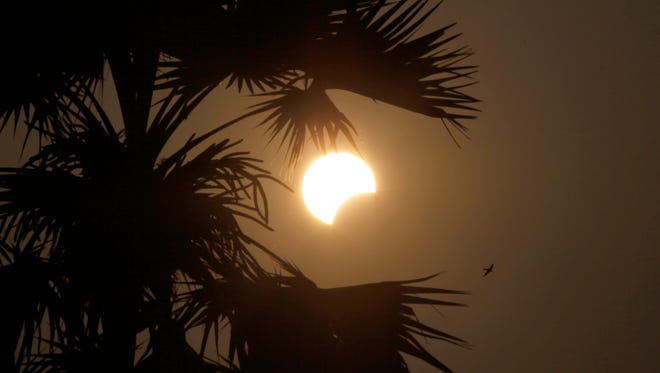Why are total solar eclipses so rare?
 Doyle Rice
Doyle Rice
People across the country are gearing up for the Great American Solar Eclipse on Aug. 21 — but why all the hype?
Although there's a total solar eclipse somewhere on Earth about once every 18 months, many people never witness one. That's because so much of the Earth's surface is water.
It takes three celestial bodies — the sun, moon and Earth, all on their own orbital paths — to line up in the exact way at the right time to create an eclipse.
On average, a total eclipse is visible from any one spot on Earth about once every 375 years.
In the U.S., it takes about 1,000 years for every place in the Lower 48 to be able to view a total solar eclipse. You must be in just the right place at just the right time under just the right weather conditions to observe the event.
To figure out when an eclipse will occur, astronomers first work out the geometry and paths of the Earth and moon as they orbit the sun, mathematically figuring out the motions of each of the three bodies in three-dimensional space.
Astronomers then feed the current positions and speeds of the Earth, moon and sun into a computer, programming it to calculate future paths in relation to one another and what will be the view from the vantage point of us down here on Earth.
Eclipses are specific predictions of where the three bodies will be at an exact time and place. Current eclipse forecasts are accurate to less than a minute.
